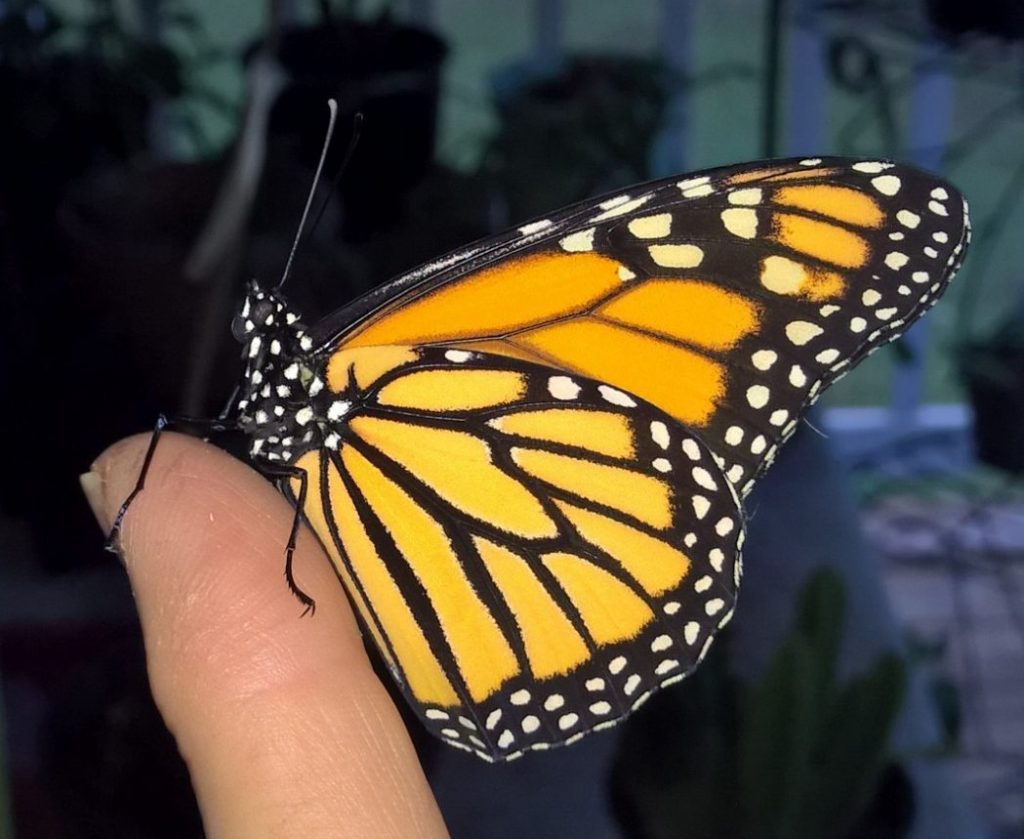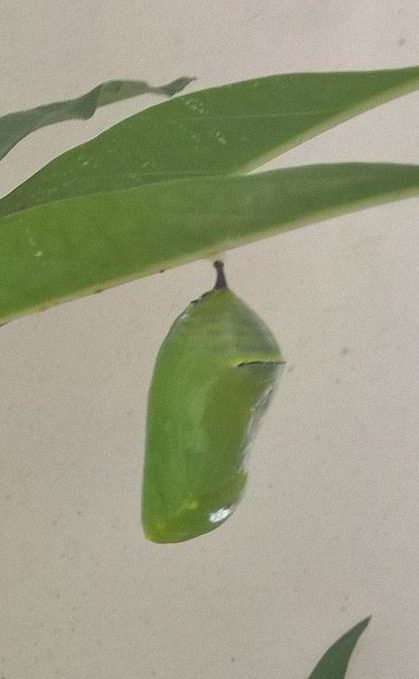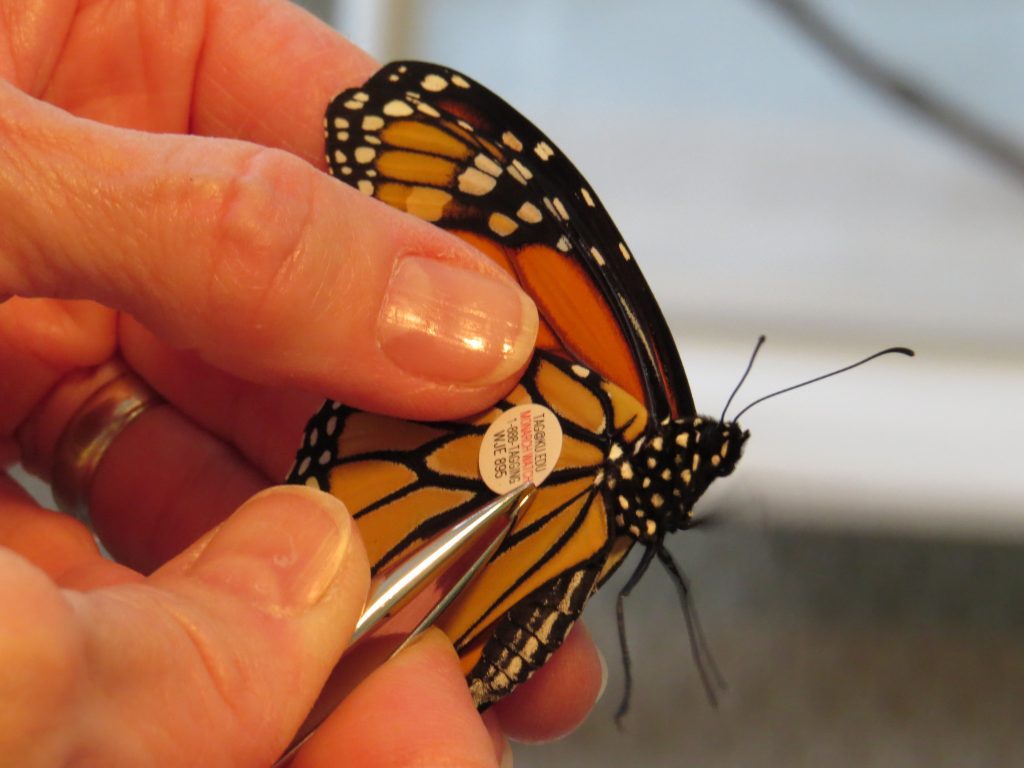Monarchs & Milkweed
Monarch Butterfly Adoptions
For about three years now, Lewis Ginter Botanical Garden’s volunteer-led spring and fall plant sales have actively encouraged home gardeners to grow plants that support native butterflies and local pollinator populations. Each year, we feature butterfly habitat kits, each containing host plants (plants that caterpillars need for food) and nectar plants (plants 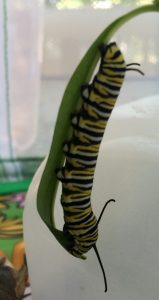 that butterflies need for food) for native butterflies. They are always very popular! Typically we offer one for monarch butterflies (Danaus plexippus) featuring milkweed and other nectar plants, and another for Eastern black swallowtail butterflies (Papilio polyxenes asterius) featuring their host plants and nectar plants too. Because scientists have documented a 90 percent decline in the monarch butterfly population, protection of this species has become particularly important. Unlike many other butterfly species, monarchs only have one host plant: milkweed. There are multiple causes of the monarch’s steep decline in population: lack of milkweed habitat, pesticide use, climate change and logging all contribute. Encouraging citizens to plant milkweed, and educating them about the monarch’s plight seems like a good first step towards making an effort to reverse the monarchs’ decline.
that butterflies need for food) for native butterflies. They are always very popular! Typically we offer one for monarch butterflies (Danaus plexippus) featuring milkweed and other nectar plants, and another for Eastern black swallowtail butterflies (Papilio polyxenes asterius) featuring their host plants and nectar plants too. Because scientists have documented a 90 percent decline in the monarch butterfly population, protection of this species has become particularly important. Unlike many other butterfly species, monarchs only have one host plant: milkweed. There are multiple causes of the monarch’s steep decline in population: lack of milkweed habitat, pesticide use, climate change and logging all contribute. Encouraging citizens to plant milkweed, and educating them about the monarch’s plight seems like a good first step towards making an effort to reverse the monarchs’ decline.
This fall the volunteer team discovered that monarch butterflies had been busy laying eggs on the milkweed plants we were growing for Fall PlantFest. Numerous monarch caterpillars were enjoying the various types of milkweed growing. Volunteers realized this was a great opportunity to educate the public, while also helping the monarch population by providing the opportunity for people to adopt the caterpillars, ensuring they were taken care of and the resulting butterflies released so that they could continue on their journey. Monarch caterpillars are voracious eaters, so we made sure those adopting them had plenty of milkweed leaves to sustain the caterpillar as well as nectar plants to feed the butterflies after they emerge from their chrysalis. We also provided information on how to raise the caterpillars and release and the resulting butterflies. We made sure they knew how to contact us if they had questions — we wanted to support them as much as we could. We also hoped that we’d get to hear about their experience and what they learned during the project.
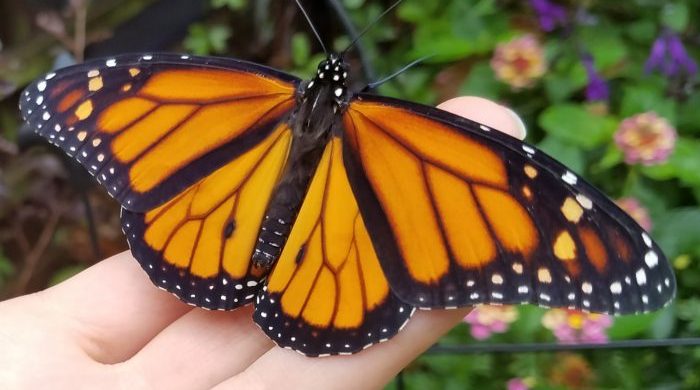
Herbie the Monarch, one of 12 monarchs that were “adopted” as caterpillars and released as butterflies.
We were able to document 12 successful releases of monarchs. Only one caterpillar failed to pupate, of those reported. Master Naturalist Linda McBride, a volunteer here at the Garden tagged a male and female butterfly before she released them. Their numbers are WJE895 and WJE896. We’ll be checking them on Monarch Watch, and you can too, to see if these two butterfly numbers get turned in over the next year and where they were found.
The adopters shared these comments:
“Thank you for the opportunity to be part of a wonderful experience”
“It was a fun time, and we learned a lot”
“The boys loved caring for and watching our caterpillar. They checked on the caterpillar daily. Thank you so much for this opportunity.”
“What surprised me was that the chrysalis was about a third of the size of the original caterpillar”
“We ended up with an extra surprise. Both caterpillars were successful releases. Very fun project, thanks so much.”
“I’m happy to let you know that the caterpillar I adopted at the Lewis Ginter Botanical Garden Fall Plant Fest has just been released as a beautiful butterfly. Thank you for such an amazing experience. I was lucky enough to watch and film ‘Herbie’ becoming a chrysalis.”
We hope you enjoyed reading about our monarch adventures and learning why it’s important to plant milkweed for our monarch friends. Here at Lewis Ginter Botanical Garden we have been growing and selling milkweed for several years now but ultimately we all have to contribute to the solution. I believe that based on our amazing ‘crop’ of monarch caterpillars this summer, it shows that if you plant milkweed the monarchs will find it and it can make a difference. Thank you to all the adopters who not only adopted these beautiful creatures but also learned something about a new species or taught something to their children. Keep your fingers crossed that all the Lewis Ginter Botanical Garden monarchs make a safe journey to Mexico, survive the winter and help start next year’s monarch population.
Monarchs Connecting People and Plants
Here at Lewis Ginter Botanical Garden our mission is education. We connect people through plants to improve the communities. This project illustrates how Garden volunteers are also inspired to embody both our mission of education and connecting people through plants to improve communities.
If you’d like to keep learning about these amazing creatures, there are many resources available. Lewis Ginter Botanical Garden has a webpage dedicated to teaching about the best plants for attracting native butterflies in Virginia. It covers not just monarchs but all native butterflies for Virginia. It tells you which annuals and perennials to plant to attract which butterflies. Also, Monarch Watch and the Center for Biological Diversity are excellent resources for more information on monarch butterflies.
Also, both the Lora Robins Library and the Garden Shop have excellent books on monarchs if you want to learn more. You can also come visit monarch butterflies in person in as soon as it is warm enough. Monarchs and other native butterflies can be found in nearly all parts of the Garden, and the Children’s Garden has a Monarch Waystation too. Also, you won’t want to miss Butterflies LIVE! when it returns next spring starting April 14 and running through October 15, 2017.
